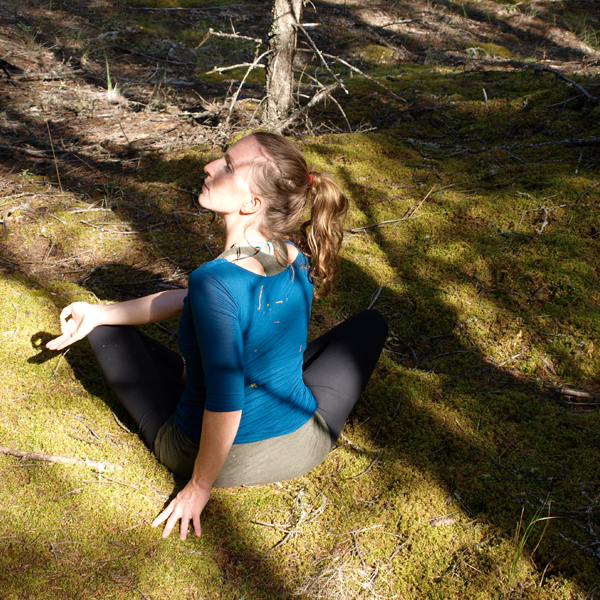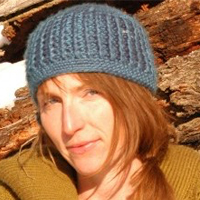Yoga is not a class.
It has nothing to do with stretching, it can’t be taught, and it’s not about going after “connection.”
This is not about how horrible yoga classes are; there are valuable things about classes, and you can read about them at the end of this article.
We each start the practice of yoga for different reasons. I came to the practice of yoga because I was seeking…something.
I had just finished my college diploma and I didn’t know what I wanted. I did know, however, that I didn’t want to do what I had studied, to work in a nine to five job, or to live in front of a computer.
I knew what I didn’t want, not what I wanted. I was lost, deeply unhappy, an emotional wreck; whilst my friends were out exploring, drinking and having fun, I felt like I was having a midlife crisis at 19.
Eventually, I did figure out what I wanted. I wanted to feel free and spacious.
Through the practices of awareness, contemplation, breathing, and meditation techniques I was able to finally feel what was me and what wasn’t. I was no longer tethered to (as many) stories I had unconsciously accepted, or thoughts that weren’t mine, or emotions that arose.
I came to a place of relative equanimity. Not that it’s all unicorns and rainbows—occasionally the surface is rough. For the most part, though, feelings of peacefulness reside underneath that surface. Even more importantly, I know what to do when I don’t feel peaceful; I have the skills to navigate my inner seas.
So, it actually breaks my heart that yoga has become synonymous with stretching and asana (often translated as posture, but that’s not entirely correct, which is another article) because this beautiful, deep practice that helped me “save” my life, is a practice of humility, grit, contemplation, space, and breath.
When I first started yoga, I took class after class (trainings included), did pose after pose, and eventually taught class after class. I came to realize that the postures are not inherently yoga, but merely a tool. I began to understand that confusing the posture for yoga is like confusing a hammer for the house. As a side note, that’s an interesting story to have to unravel as a teacher when most classes are asana-centric and students expect the class to be about stretching.
I turned my practice (not my body!) on its head and went in search of how to build presence and awareness, and settle things within myself instead of lengthening my hamstrings for a better downward dog…because as one of my teachers said:
“Your knee cap isn’t an enlightenment button. There isn’t suddenly a rush of wisdom that comes over you when your nose touches your knee.”
Ironically, when I took that sabbatical from the current yoga trainings, that’s when yoga started organically bubbling up within me. Most of the skills that were really effective in dissolving what was unsettled in me came not from the classes or teacher trainings but rather from various other places that I was able to sniff out over the years.
These skills, techniques, tools and ways of life vary from dyading (a process of meditating via deep contemplation and expression between two people), tantric elements (specifically, a chakra system that is connected directly with natural elements), and Applied Ecopsychology (a study of human health in relationship to nature). Each one of these helped fill in the holes that were missing from my original teacher trainings and were able to offer insight and tangible answers that I just couldn’t find in the way classes were being offered.
Here are five things I’d like to share about a yoga practice:
1. Practicing yogic techniques will bring more insight and awareness, which isn’t always pleasant. Yoga isn’t a path of rainbows and unicorns, it can be a bumpy path of gritty honesty, courage, and breath that is grounded in the everyday “magic” of life.
I use the word “magic” here because how does anyone ever truly know the whys or hows? There are many things that are simply unexplainable. I have come to appreciate that resting in this unknowing is a form of knowing. I use the word courage because yoga will change lives but not always for the easiest; once aware of something integral, a yogi/yogini will be unable to pretend it doesn’t exist. Luckily though, the breath can anchor us in the moment and not in the stories.
2. Yoga is often defined as, or said to mean, connection. I’d like to challenge this notion because connection is what arises organically in the awareness of the moment. There’s a difference between directly going after connection (making the practice about connection) versus practicing awareness and having the realization(s) arise without effort or agenda.
In going directly after the connection, the tendency is to try to skip over the anger, frustration, boredom, anxiety, unknowingness, and unwillingness, and go straight for the fuzzy warmth of connection. Each one of those things has wisdom and insight for us.
The techniques help us see what is stopping us from being present and they offer insight on how to settle, dissolve, accept, and/or transform that which is stopping us from being present. When we are present, connection is already there.
3. A “teacher” can assist in facilitating the knowledge of using the techniques and how and how to hold space for the experience of yoga, but they can never teach another the experience of the realization of yoga. The realization happens when it happens. Popcorn just pops when it’s ready. The practice of the techniques and the desire for change are the “heat”—there is a tendency for the realization to arise when there is stillness within.
“When we are quiet it speaks, when we speak it is quiet.” ~ Alan Watts
4. Everyone has different stories to unravel and insights to glean before resting in the experience of oneness.
There are many realizations along the way. We often refer to these as the side effects of yoga and many people will holler from the roof tops that this (insert side effect) is what yoga is. Some will shout that yoga is about loving yourself or that it is about connecting with the divine. These are great insights and they may be true for that individual but that is not the intent of the practice—just as it is not about stretching or balance—though those things arise and may be useful.
Some practitioners have to set down their desire for divine connection to be more present in the moment, and others may need to feel something more than self love for yoga to arise. There are as many unique paths to yoga as there are practitioners.
Since each of us has different things that need to settle so the insights can arise, what is the practice really about?
In everything I have read, experienced, and understood, yoga is pure awareness (or as close as we can get to it). In those moments of awareness, realizations occur. Although we may never reach every moment in pure awareness, we rest in it as best we can, when we can, and how we can.
5. Yoga has a vast selection of techniques and tools to help settle or dissolve those things within us that stop us from being present and aware.
Whether it’s a pose, breath, ecstatic dancing, stillness, meditation, watching thoughts, studying, or contemplation—whatever helps us become more aware and present to reality is arguably a yogic technique. The techniques we need vary from person to person, day to day, and throughout the cycle of a lifetime; that’s why there are so many styles and techniques.
Yoga is not a stretching class, but rather a way to garner insight and awareness, to increase our ability to be present with what’s real and be in the moment.
A posture or series of postures can often help to settle frenetic mental energy so that one can sit in awareness more fully, just as a restorative practice can revitalize stagnant energy. In this way the postures can help settle us to be ready to see what’s there.
After some practice, the yogic techniques yoke (joins us, or hitches our awareness) to the realization of oneness (yoga).
Things classes are great for:
>> learning the skills/techniques that help make one aware of the disturbances, stories, shoulds, and veils that are in the way of being even more present to the moment
>> people whose homes are overly vivacious who need a place of calm
>> poses, which are great tools for learning about ourselves
>> the community in a classroom,
>> having other people choosing the same thing can increase confidence about your choices
>> learning new ways of using or insights into the tools
>> momentum if one needs help with discipline
>> Inspiration
~
Author: Natalie Forrest
Image: Author’s Own
Editor: Catherine Monkman











Read 0 comments and reply